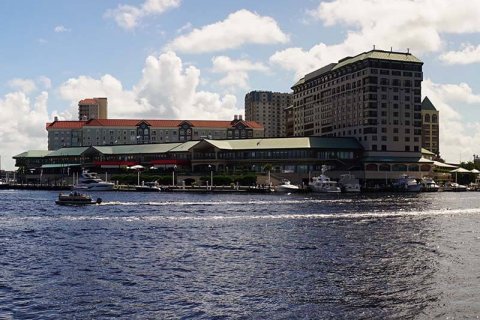
Solar power plants have become a common sight in Florida’s residential property market over the past few years, but it hasn’t been used actively in the commercial sector. This trend is beginning to change as more and more large companies realize the value of placing solar panels in little-used spaces, such as roofs of buildings and garages.
Raymond James Financial in Saint Petersburg, Florida, is a vivid example of this shift. The financial centre has recently hired Advanced Green Technologies from Fort Lauderdale that has an office and a warehouse in Tampa to build two carports over garages at its headquarters in the business neighbourhood of Carillon Park. The solar panels on the carports will generate a total of 1.7 MW of renewable electric energy (to put it into perspective, 1 MW can power 164 US houses).
Clint Sockman, Executive Vice President at Advanced Green Technologies, is certain this is going to be an outstanding solar project. All the energy is fed from the garages back to the main facility, so approximately 10% of power used in this huge campus every year can be supplied by only these two garages.
Advanced Green Technologies, founded by Sockman in 2007, is part of the larger Advanced Roofing Group that employs over 700 people. According to him, commercial and industrial solar projects were sometimes hard to sell in the first days of the company’s existence but the demand has been gaining steam. Over the past couple of years alone, the company has installed a 2.25 MW solar cell for a carport at a Lockheed Martin property in Oldsmar and implemented a 3.7 MW project at the campus of JPMorgan Chase in Tampa. The former has been the largest solar cells carport in Florida for a long time, Sockman says. Now the JPMorgan project is the largest, but the Lockheed Martin one was a true breakthrough for the state’s solar power.
Such a burst of activity, however, begs an important question: why are commercial and industrial solar-power projects implemented slowly compared to their counterparts for homes?
Sockman names three reasons. Firstly, the cost of electric energy has historically been far lower in Florida than in other states, so there was no need to urgently implement any solar power solutions. Secondly, federal tax incentives have started growing only recently. And thirdly, Florida, unlike a few other states, has never adopted an aligned, state-approved program to encourage solar projects development.
All this is now changing. Electric energy costs much more than it used to three or four years ago, and companies can receive a tax benefit of up to 40% for using industrial goods from US vendors under the new Inflation Reduction Act.
Sockman emphasizes that solar cells on the roof not only cut energy bills but also reduce environmental impact and protect vehicles from the scorching sun and rain in Florida, while increasing the value of the property.
